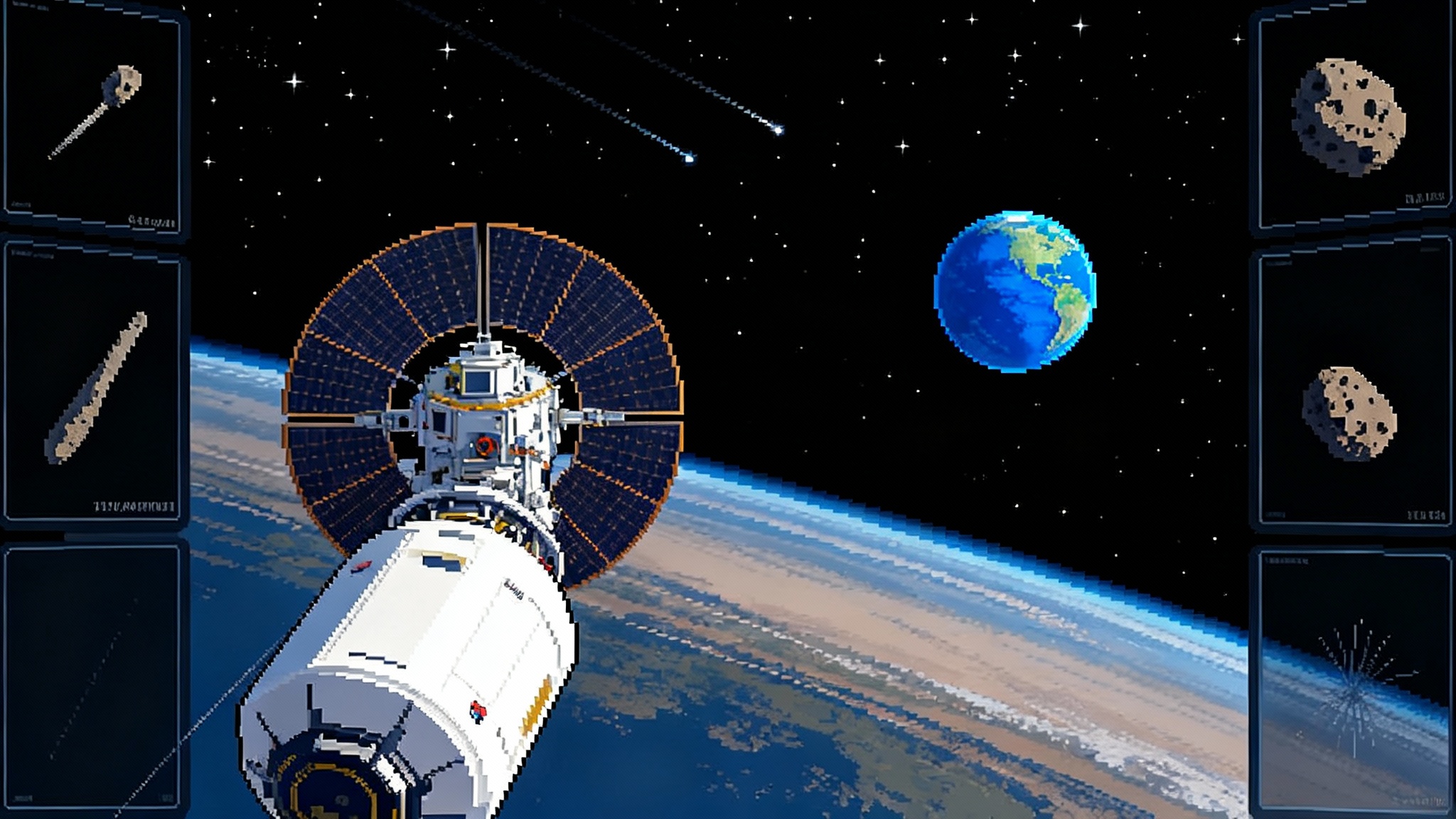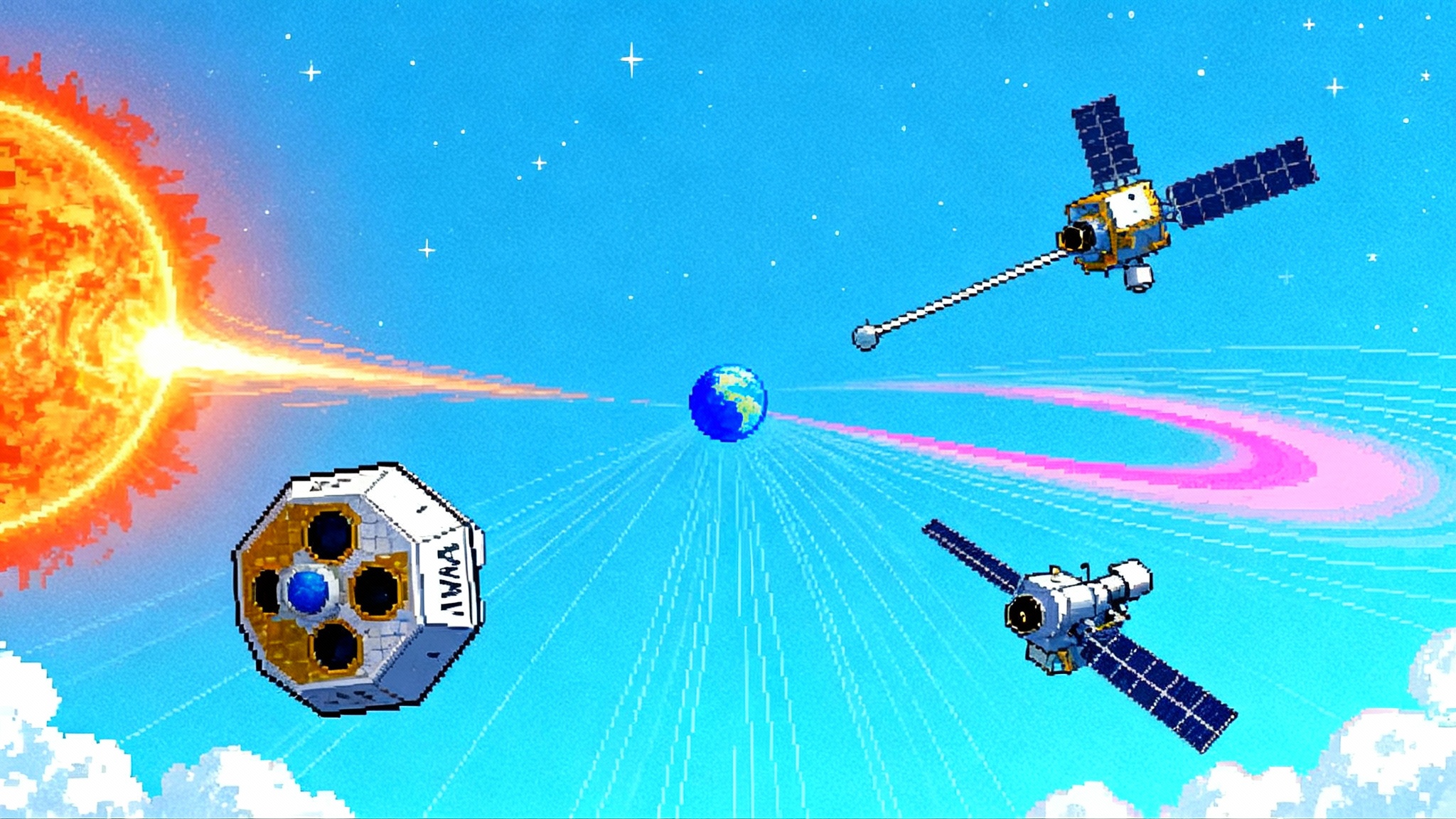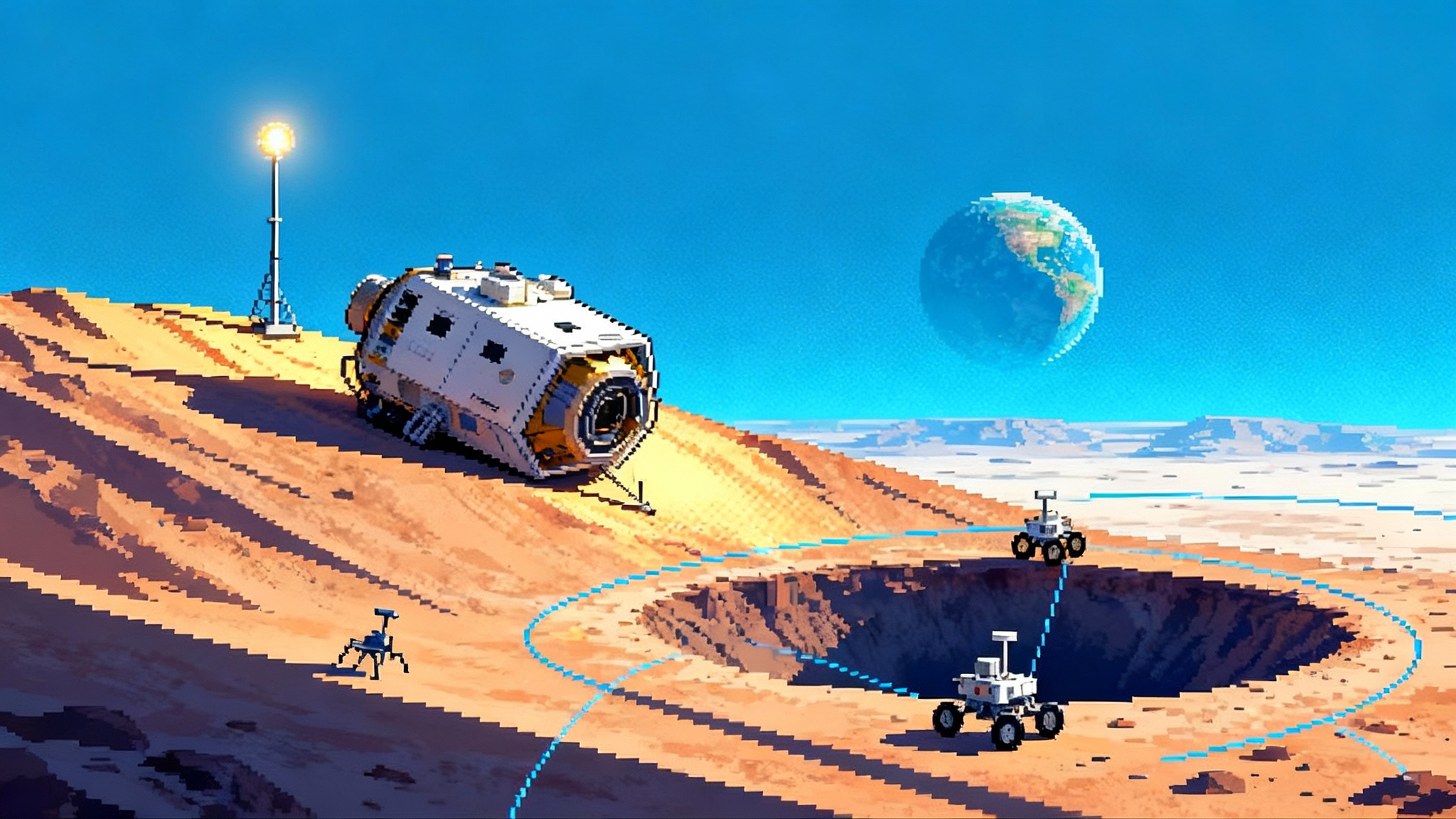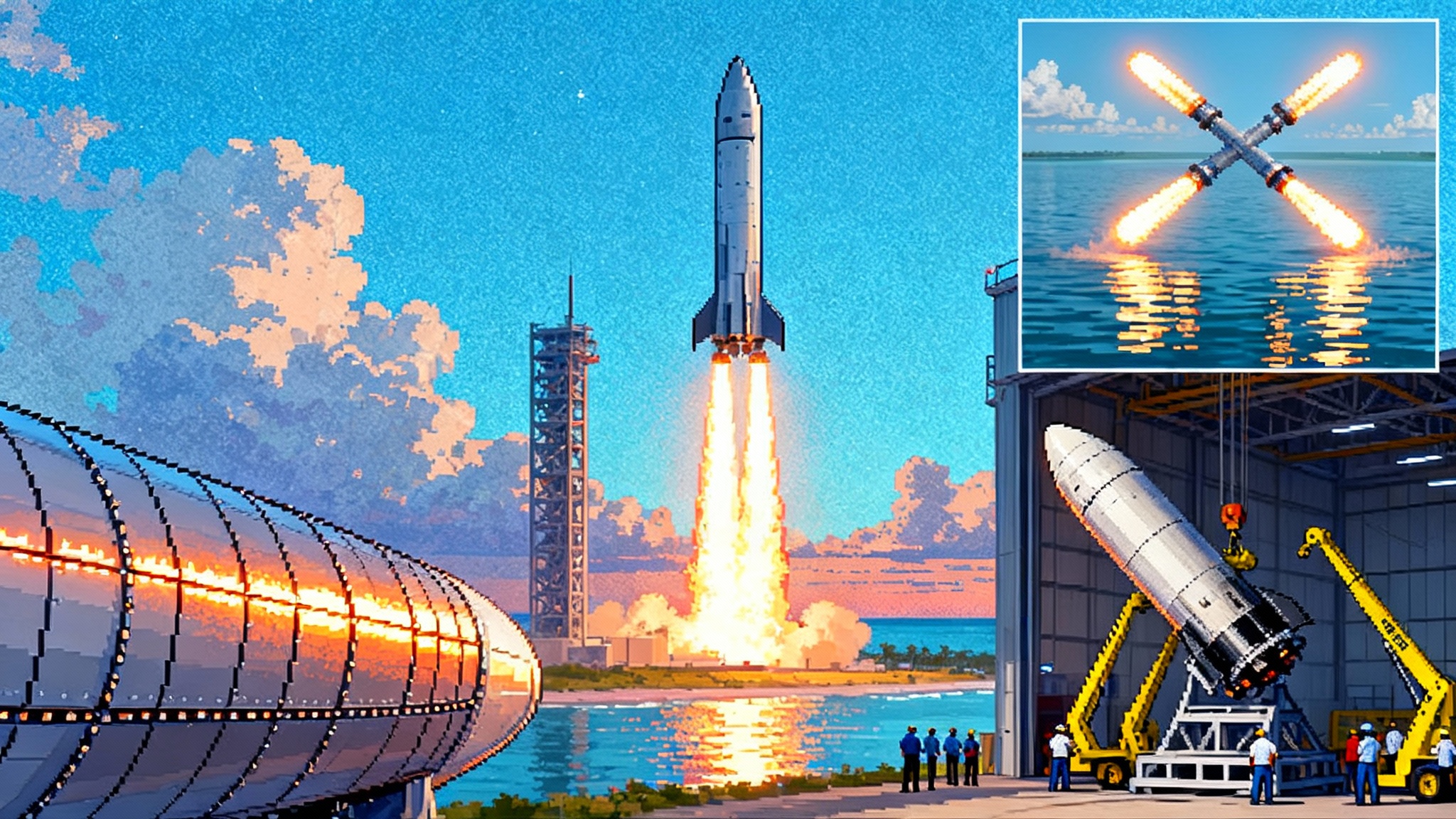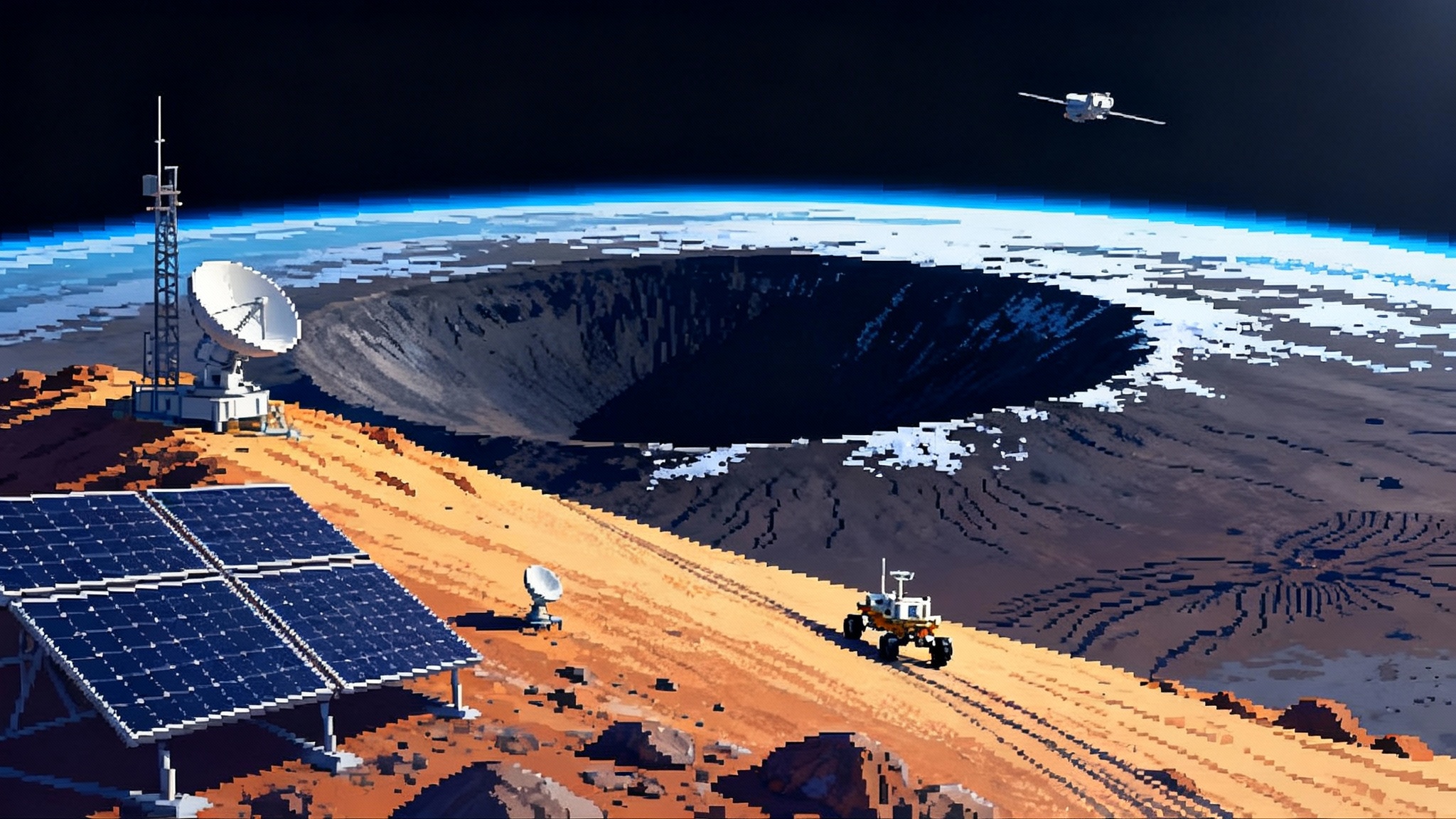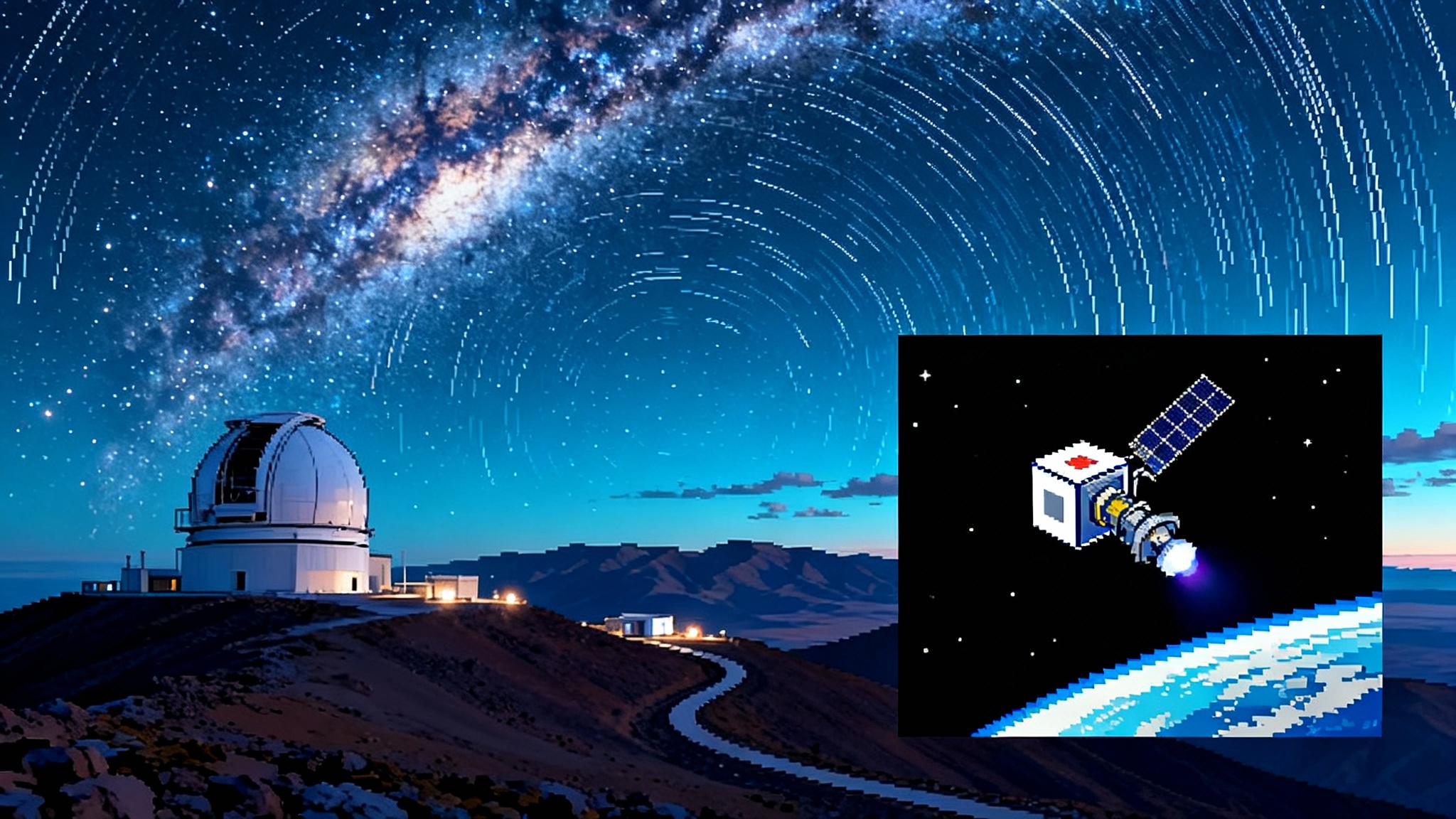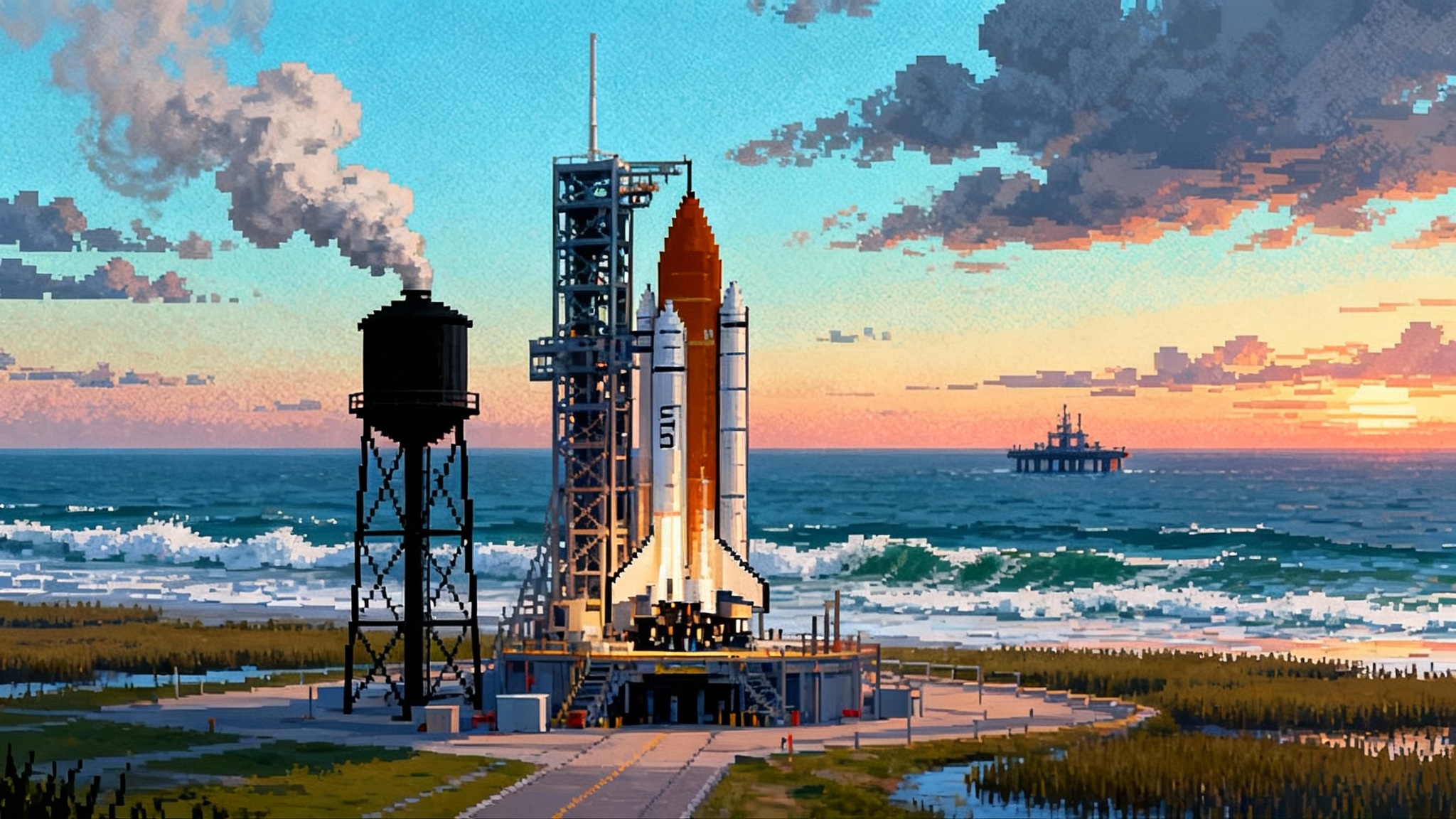SPHEREx begins a 102‑color map of the entire sky, live
NASA’s SPHEREx has entered routine science, scanning the entire sky in 102 infrared colors and refreshing the atlas twice a year. Here is how this live, spectrum-rich map will accelerate discoveries from water-ice chemistry to cosmic inflation.
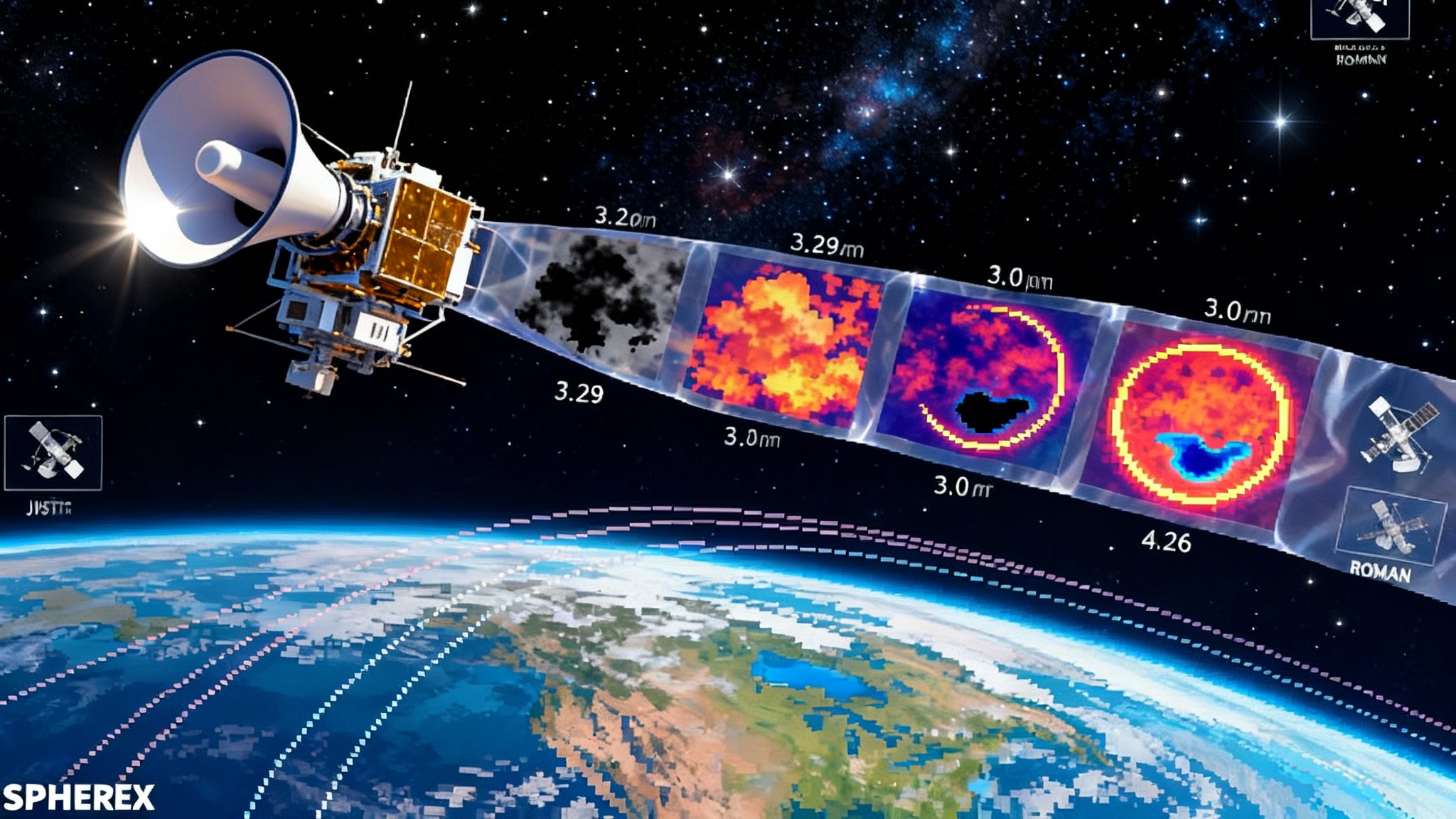
The all‑sky survey astronomers have been waiting for
The switch is on. NASA’s SPHEREx observatory is now scanning the entire sky in 102 infrared colors, building a living atlas that refreshes every six months. After launch on March 11, 2025, SPHEREx completed checkouts and began routine science on May 1, 2025. It now produces about 3,600 images per day, or roughly 600 exposures where each exposure yields six color slices. The result is not just a picture of the universe, it is a spectrum‑rich map that turns the whole sky into a searchable database of chemistry and distance. That is why astronomers describe SPHEREx as part camera, part barcode scanner, part census bureau. NASA confirmed the start of science operations in a JPL status update on SPHEREx.
SPHEREx is short for Spectro‑Photometer for the History of the Universe, Epoch of Reionization and Ices Explorer. The name hints at its three big goals. First, read the statistical fingerprints left by cosmic inflation, the hypothesized burst of expansion in the first instant after the big bang. Second, trace how galaxies formed and evolved by mapping hundreds of millions of them in three dimensions. Third, survey the Milky Way’s dark, cold places for water ice and other life‑relevant molecules that hide on dust grains in star‑forming clouds. The observatory is small by telescope standards, with a 20 centimeter mirror, but it sees a very wide patch of sky, roughly 11 by 3.5 degrees at a time. That wide view and its unusual color technology let SPHEREx paint the sky fast, then repaint it, four times during its 27‑month primary mission that runs through 2027.
What 102 colors really means
Most telescopes use discrete color filters that pass one slice of wavelength at a time. SPHEREx uses linear variable filters that change wavelength gradually across the detector, so shifting the field of view across the filter acts like sliding a prism. Each of the six detectors carries a filter broken into 17 narrow color bands. Six detectors times 17 bands equals 102 distinct colors, spanning roughly 0.75 to 5.0 microns. These are invisible to the human eye but rich with information.
Key spectral fingerprints include:
- Water ice around 3.0 microns, a deep absorption dip tied to planet‑forming environments
- Polycyclic aromatic hydrocarbons near 3.29 microns, highlighting soot‑like molecules
- Carbon dioxide near 4.26 microns and carbon monoxide near 4.7 microns, tracing volatile chemistry
Because SPHEREx measures many such features at once, every point on the sky gets not only brightness but also a low‑resolution spectrum that encodes composition and, for galaxies, distance.
Think of it like a city map where every building also carries a barcode that tells you what it is made of and how far away it sits. SPHEREx reads millions of those barcodes per week. The telescope completes an all‑sky pass roughly every six months, then repeats that sweep three more times. Stacking the maps sharpens details and reduces noise, which is crucial for measuring faint signals from the early universe and dim absorption features from ices in our galaxy.
A fast path to hidden water and organic chemistry
Water and organic molecules in space tend to hide where the visible light is blocked: in cold, dusty clouds where stars and planets form. SPHEREx tackles those regions by taking more than nine million line‑of‑sight measurements through molecular clouds in the Milky Way and the Magellanic Clouds. Each line of sight is like a core sample through a cloud, revealing how ice changes with depth and environment. The mission’s wavelength range is tailored to capture the key signatures of water ice, carbon dioxide, carbon monoxide, and simple organics. Many of these absorption bands cannot be measured from the ground because Earth’s atmosphere contains the same molecules, which mask the view.
This is not just chemistry for its own sake. The amount of ice and its makeup influence how planets assemble. Water ice makes dust grains stickier, so pebbles grow faster. The mix of carbon‑bearing ices sets the starting recipe for atmospheres. SPHEREx will provide the first galaxy‑wide inventory of these ingredients in cold storage. In practical terms, that means researchers looking for the most water‑rich nursery, or for disks around young stars with unusual carbon dioxide or organics, can pull targets directly from the SPHEREx atlas rather than spend months doing reconnaissance with smaller telescopes.
The mission has already shown the kind of contrast infrared colors can reveal. Early science images highlight how soot‑like molecules stand out at one wavelength then disappear at another, a vivid reminder that different colors are sensitive to different physics. As SPHEREx revisits the same regions every half year, it will also catch time‑variable chemistry, for example when a newborn star briefly brightens and bakes nearby ices, changing their spectral signature.
The inflation test you can run only with statistics
Inflation is a physics problem that relies on statistics. If space expanded extremely fast in its first tiny fraction of a second, that event would have left subtle patterns in how galaxies are distributed today. Astronomers look for those patterns by measuring the clustering of galaxies across enormous volumes of space. The bigger and more complete the map, the better the chance of teasing out those patterns from random noise. This will complement results such as Euclid’s 2025 dark‑universe reboot.
Spectra are the key. Photographs alone compress depth information, but spectra let researchers estimate distances to galaxies by the way known features shift with wavelength. SPHEREx will collect low‑resolution spectra for hundreds of millions of galaxies, enough to chart the large‑scale web of cosmic structure all across the sky. That huge volume drastically reduces sample variance, the statistical wiggle that plagues smaller surveys. From that map, researchers can measure the power spectrum of galaxy clustering and hunt for small departures from the simplest inflation models, including signatures of non‑Gaussianity. Even a modest improvement in those constraints would rule out entire classes of early‑universe physics. SPHEREx’s colors are optimized to pick up the spectral features that make this analysis possible at scale.
There is a second inflation clue that SPHEREx can address. Some light from all the galaxies that ever formed overlaps and creates a diffuse glow called the cosmic infrared background. Its fluctuations carry information about the earliest and faintest galaxies, including those that current telescopes cannot resolve as individual sources. By mapping that background in many colors and across the whole sky, SPHEREx can separate the glow from foreground dust and zodiacal light, then extract the ancient signal that inflation‑era models predict.
A live target list for Webb, Roman, and friends
The power of a big map is that it tells you where to point the high‑resolution cameras. The James Webb Space Telescope excels at deep, detailed spectroscopy but has a narrow field of view and precious observing time. The Nancy Grace Roman Space Telescope will deliver sharp, wide views with exquisite control of systematics, yet it will still need well‑vetted targets to get the most out of its survey programs. SPHEREx is designed to be a finder. It flags promising disks around young stars that glow with water ice. It highlights galaxy clusters at just the right redshift to test theories of dark energy. It identifies dusty starbursts whose chemistry begs for deep Webb spectra, including targets relevant to JWST dark star hints. It also marks changing objects that merit time‑domain campaigns informed by Rubin’s first images era.
The pipeline is already visible in the data release plan and archive tools. NASA’s Infrared Science Archive at Caltech started hosting quick‑release products in July 2025, along with a continuously updated catalog that focuses on ice‑rich targets for immediate follow‑up. Teams can explore the SPHEREx page at NASA IRSA to query by molecule and brightness and to integrate targets into proposals via code or web forms.
Small‑body researchers expect a windfall as well. The 0.75 to 5.0 micron range captures the 2.7 micron hydration band that reveals rocks altered by liquid water, the 3.0 micron band of water ice, and signatures of simple organics. Those features are largely blocked from ground‑based telescopes by Earth’s atmosphere. SPHEREx, observing from orbit, can gather uniform snapshots of tens of thousands of asteroids and comets as they drift through its field of view. That becomes a ready list for targeted follow‑up by ground facilities, by Webb, and by future spacecraft flybys. When a newcomer like an interstellar comet appears, a SPHEREx spectrum can quickly tell teams if water or carbon dioxide is active, helping them decide whether to pivot assets for a closer look.
How the telescope moves so fast
Speed comes from design choices. SPHEREx has no moving parts for routine operations. Once its aperture cover was ejected, the telescope scans by slewing the whole observatory, not by flipping filter wheels or refocusing. The mirror sends light through a dichroic splitter to two detector banks, one tuned for shorter wavelengths, one for longer. Linear variable filters on top of the detectors create the color separation directly on the focal plane. This design trades the complexity of mechanism for the simplicity of geometry, which helps stability and calibration across years of scanning.
The spacecraft flies in a near polar orbit that lets it paint swaths of sky with each pass, then shift the swath slightly on the next orbit. The geometry guarantees clean coverage near the ecliptic poles, which is why SPHEREx plans the deepest fields in those regions. The wide field of view means each exposure captures more than twenty million pixels, and the overlapping pattern ensures each patch of sky is observed in all 102 colors by the time the survey tiles are complete. Repeat passes reduce noise and help catch transients.
What scientists and students can do now
If you are building a proposal for Webb, Roman, or a ground observatory, SPHEREx will save you time on target vetting. Instead of assembling a dozen photometric points from different surveys, each taken with different filters and calibrations, you can start with a uniform, space‑based spectrum. That uniformity is not an academic point. It reduces the risk that you are chasing a spurious feature created by mismatched data. For time‑critical campaigns, like comet outbursts or newborn stars that flare, the six‑month cadence provides a fresh look without having to schedule new reconnaissance.
Graduate students and postdocs can dive in as well. The quick‑release images and catalogs are designed to be accessible, and the archive includes documentation and programmatic interfaces. A student looking for water‑rich lines of sight through the Orion or Perseus clouds, for instance, can query the archive for strong 3.0 micron absorption, crossmatch with young stellar objects, and propose a Webb spectrum to resolve deeper molecular structure. A cosmology student can test inflation models by slicing the SPHEREx galaxy map into redshift shells, computing clustering statistics, and checking for patterns that deviate from a simple Gaussian field. The point is not to wait for a perfect dataset, it is to use the live atlas to make smart decisions about precious follow‑up time.
Why 2027 matters
SPHEREx’s primary mission runs into 2027, long enough to complete four full‑sky maps. That overlap matters. Webb will still be in its peak years. Roman will be ramping up. Small‑body missions and surveys will continue to discover targets that beg for prompt characterization. By then, SPHEREx will have released at least one all‑sky dataset at all 102 colors along with improved catalogs that fold in multiple passes. Repetition will expose the subtle drifts and rare transients that one‑off surveys miss. It will also give astronomers the confidence to use SPHEREx as the first line in a decision tree: select, rank, and dispatch.
The bottom line
SPHEREx is not trying to take the sharpest pictures. It is building the most useful, color‑rich atlas of the sky for the questions astronomers need to answer next. The survey is live. It is fast. It is chemically aware. It is statistically powerful. By 2027, that atlas will have fed hundreds of high‑value targets to the James Webb Space Telescope and the Nancy Grace Roman Space Telescope, and it will have given small‑body teams the spectral clues they need to pick winners.
Quick takeaways:
- Live, repeatable atlas: All‑sky coverage in 102 colors every six months
- Chemistry at scale: Uniform spectra for water, organics, and key volatiles
- Cosmology leverage: Low‑resolution spectra for hundreds of millions of galaxies
- Follow‑up accelerator: A ready target list for Webb, Roman, and ground facilities
Read more context in the ongoing JPL status update on SPHEREx and explore targets via the SPHEREx page at NASA IRSA.
